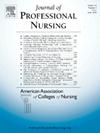A measure of wellness among nursing faculty
IF 2.9
3区 医学
Q1 NURSING
引用次数: 0
Abstract
Background
Nurse faculty play a critical role in sustaining the nursing workforce and meeting the nation's healthcare needs. Given the ongoing concerns about faculty supply, ensuring the well-being of nurse educators is critical concern for academic institutions and the larger nursing profession.
Purpose
This study was conducted to assess the level of well-being among nursing faculty in undergraduate and graduate programs.
Methods
A descriptive cross-sectional research design was employed to examine the level of well-being of nursing faculty. An internet-based survey was administered to faculty in over 1000 schools of nursing in the United States. Well-being was measured using the 100 Million Healthier Lives instrument.
Results: A total of 3489 nursing faculty completed the survey. Among all participants, over 40 % (n = 1532) of the faculty reported that they were struggling or suffering in relation to current and future life evaluation. When faculty ranks were compared for most all variables full professors reported a higher mean score as compared to the more junior faculty and lecturers/instructors.
Conclusions
The effects of the COVID-19 pandemic have heightened our awareness of the importance of nurse well-being. Creating a culture of wellness in an academic institution will allow faculty, staff, and students to excel in a healthy working and learning environment.
衡量护理人员的健康状况
护士教师在维持护理队伍和满足国家医疗保健需求方面发挥着关键作用。鉴于对教师供应的持续关注,确保护士教育工作者的福祉是学术机构和更大的护理专业的关键问题。目的本研究旨在评估本科及研究生护理教师的幸福感水平。方法采用描述性横断面研究设计,对护理教师的幸福感水平进行调查。对美国1000多所护理学院的教师进行了一项基于互联网的调查。幸福感是用“1亿人更健康生活”工具来衡量的。结果:共有3489名护理专业人员完成调查。在所有参与者中,超过40% (n = 1532)的教师报告说他们在当前和未来的生活评估中挣扎或痛苦。当对大多数变量的教师排名进行比较时,正教授报告的平均得分高于较初级的教师和讲师/讲师。结论2019冠状病毒病大流行的影响提高了我们对护士健康重要性的认识。在学术机构中创造一种健康的文化将使教职员工和学生在健康的工作和学习环境中脱颖而出。
本文章由计算机程序翻译,如有差异,请以英文原文为准。
求助全文
约1分钟内获得全文
求助全文
来源期刊
CiteScore
4.80
自引率
8.00%
发文量
153
审稿时长
52 days
期刊介绍:
The Journal will accept articles that focus on baccalaureate and higher degree nursing education, educational research, policy related to education, and education and practice partnerships. Reports of original work, research, reviews, insightful descriptions, and policy papers focusing on baccalaureate and graduate nursing education will be published.

 求助内容:
求助内容: 应助结果提醒方式:
应助结果提醒方式:


